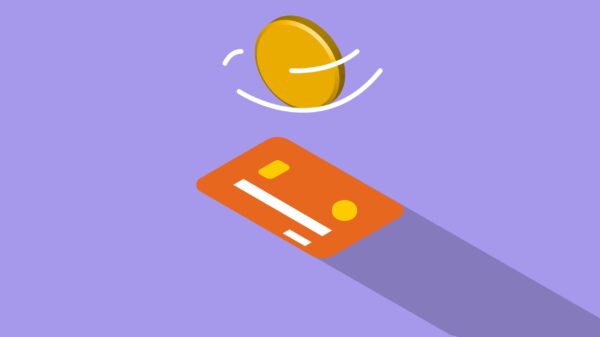Are you tired of feeling like your paycheck disappears the moment it hits your bank account? Do you want to take control of your finances and start saving for the things that matter most to you? If so, then it’s time to create a budget and stick to it! In this blog post, we’ll walk you through the steps to creating a budget that works for your unique situation, and provide tips on how to stick with it in the long run. Whether you’re looking to pay off debt, save for a big purchase, or simply gain more financial freedom, this guide is here to help. Let’s get started!
Introduction to budgeting
Assuming you don’t have a budget:
Start by evaluating your spending patterns. Look at your bank statements and credit card bills from the past few months to get an idea of where you are spending your money. Track your spending for a month going forward. Write down everything you spend, including groceries, gas, entertainment, and impulse purchases.
Next, figure out your regular expenses, such as rent or mortgage payments, car payments, insurance premiums, and minimum debt payments. These are the fixed costs that you have to pay every month. Make a list of these expenses along with the approximate amount you spend on each one.
Now that you know where your money is going, it’s time to figure out how much money you have coming in. Look at your pay stubs from work or other sources of income, such as investments or side hustles. Add up all of your income for the month to get your total monthly income.
With your total monthly income and expenses in hand, you can now start creating a budget. Begin by allocating funds to cover your necessary expenses, such as housing, food, transportation, and debts. Then, determine how much you want to save each month and put that money into savings. Finally, consider what you have left over for discretionary spending on things like entertainment and eating out. Remember to leave some wiggle room in your budget in case unexpected expenses come up!
Setting Goals and Priorities
It’s no secret that creating and sticking to a budget can be difficult. But, it doesn’t have to be! One of the most important things you can do when creating a budget is to set goals and priorities. This will help you stay on track and make sure your spending aligns with your values.
When setting goals, it’s important to be specific. Vague goals like “saving money” or “getting out of debt” are harder to stick to than ones that are specific and measurable. For example, a goal like “save $500 in the next month” is much easier to track than a goal like “save money.”
In addition to setting specific goals, it’s also important to prioritize them. Ask yourself what is most important to you and what you need to spend money on in order to reach your goals. For example, if your goal is to save for a down payment on a house, you may need to prioritize saving over other spending in order to reach your goal in a timely manner.
Creating and sticking to a budget can be difficult, but it doesn’t have to be. By setting goals and priorities, you can make sure your spending aligns with your values and stay on track towards reaching your financial goals.
Determining Your Income and Expenses when creating Budget
When it comes to budgeting, one of the most important things you can do is figure out your income and expenses. This will give you a good starting point for creating a budget that works for you
There are a few different ways to determine your income and expenses. One way is to track your spending for a month or two so you have a better idea of where your money goes. This can be done by using a budgeting app, keeping a spending journal, or simply writing down your purchases in a notebook.
Another way to determine your income and expenses is to look at your bank statements and credit card bills. This can give you an idea of how much money you typically spend in different categories. You may also want to look at your pay stubs to get an accurate picture of your monthly income.
Once you have a good understanding of your income and expenses, you can start creating a budget that meets your needs. Be sure to include some wiggle room in your budget so you don’t end up feeling too restricted. And remember, budgets are meant to be flexible – so don’t be afraid to make changes as needed!
Creating a Budget Plan
Assuming you don’t have a budget:
Start by evaluating your spending habits. Track where you are spending your money for at least two weeks. Once you have a good understanding of your spending patterns, you can start to make changes.
There are a few key things to keep in mind when creating your budget:
1. Make sure your income exceeds your expenses. This may seem like an obvious one, but it’s important to make sure that your income is greater than your expenses. Otherwise, you’ll never be able to save money or get ahead financially.
2. Prioritize your spending. After you’ve determined what your regular expenses are, you can start to prioritize your spending. Ask yourself what’s most important to you and what can be cut back on if necessary. For example, if eating out is something that’s important to you, then allocate more of your budget towards restaurants and less towards other categories like entertainment or clothing.
3. Stay flexible. Life happens and unexpected expenses come up all the time. That’s why it’s important to stay flexible with your budget and not get too stressed out if you overspend in one area from time to time. Just try to stick to your overall budget as best as you can and make adjustments as needed.
Implementing the Budget Plan
Once you have your budget plan created, it is time to start implementing it. This can be difficult, especially if you are used to spending without a budget. But, with a little discipline and planning, you can stick to your budget and start saving money.
Here are a few tips for implementing your budget plan:
1. Track your spending. This will help you see where your money is going and where you can cut back. There are many ways to track your spending, including using a budgeting app or tracking your expenses in a spreadsheet.
2. Make changes slowly. If you try to make too many changes at once, it can be overwhelming and difficult to stick to. Start by making small changes, such as cutting back on unnecessary expenses or eating out less often.
3. Find ways to save money. Once you know where your money is going, look for ways to save money on those expenses. For example, if you spend a lot on groceries, see if you can find cheaper alternatives or shop at discount stores.
4. Stay disciplined. It takes discipline to stick to a budget, but it is possible if you make it a priority and stay focused on your goal of saving money. If you slip up, don’t give up – just get back on track and keep going
Tracking Expenses and Adjustments in Budget
Assuming you’ve already looked at your spending and identified some areas where you can cut back, it’s time to start tracking your expenses. This will help you see where your money is going and make adjustments as necessary.
There are a few different ways to track your expenses. You can use a pencil and paper, a spreadsheet, or one of the many budgeting apps out there. Whichever method you choose, be sure to track all of your expenses, including bills, groceries, gas, entertainment, etc.
If you find that you’re regularly spending more than you’d like in a certain category, try to adjust your budget accordingly. For example, if you find that you’re eating out too often, try cooking more meals at home. If you’re spending too much on entertainment, cut back on unnecessary subscriptions or memberships.
By tracking your expenses and making adjustments as needed, you’ll be well on your way to creating a budget that works for you.
Strategies for Budget
There are a few key strategies you can use to make sure you stick to your budget.
First, track your spending for a month so you know where your money is going. This will help you identify areas where you can cut back. Then, set up a budget and make sure to include wiggle room for unexpected expenses. Automate your savings so you don’t have to think about it, and finally, create a system of rewards for yourself when you stay within your budget.
Conclusion
Creating a budget and sticking to it can be daunting, but with the right tools and strategies in place, you can ensure that your finances stay on track. We hope that this article has provided you with some useful advice for creating an effective budget and making sure you stick to it. With dedication and discipline, anyone can create a budget that works for them. So take action today and get started on creating your own budget!










